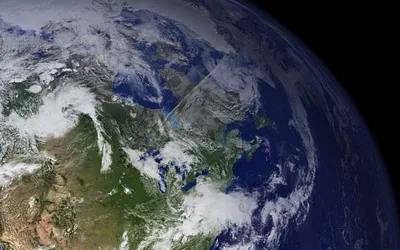Advancement of Alternatives
Updated | 2020-04-24
Reviewed by the NatureClaim Team

The year is 2060.
I peer out of the small circular window and take an alternative drug containing ginger to calm my stomach. Home is so close. As we orbit the Earth, space was taking its toll on my health. My crew members and I had completed our mission on the moon weeks ago, but during lift-off parts of the shuttle's exterior became detached. Nothing serious. What was supposed to be a three-week long research expedition to the moon and back was now a mission to make pre-entering repairs. Last week a pod delivered more supplies and tools for the remaining repairs. It's been over a month and I miss gravity. I can feel my joints and muscles hunger for it.
I tell my body, "One more week. I hope."
"Hey..."
I turn.
"...you don't look so well."
"Yeah," I reply weakly.
"You should take this alternative drug. It has elderberry. Astronauts use it as an immune stimulant."
"Thanks," I smile and take the bottle in my hand.
My gaze returns to the window. Earth. So much has changed on that beautiful blue and white jewel. As a plant scientist, I can definitely speak for agriculture and medicinal plant research. I see the Great Lakes region through the cloud cover. It's become one of the most diverse and productive agricultural systems in the world. Once monocultures of corn and soybean dominated the land, but alternative crops have become the norm. I remember the fields of buckwheat, chia seeds, and orchards of mulberries. I remember the colorful seed heads of quinoa in the fall. And I remember the fresh pawpaw fruits were a late summer delight. After years of neglecting our bodies, we realized superfruit and superfoods were not the fix to support a well-balanced diet.
Development of personalized nutrition through genomic analyses further enabled us to follow a nutrition plan best suited for ourselves. This led to predictive farming. For a decade now, the demand for specific crops matched the supply. Agriculture had become more efficient and sustainable. Food waste and famine were becoming non-existent.
There was also a time when medicinal plants weren't widely accepted and cultivated. People had become distrustful of dietary supplements and superfoods. Nothing worked and people died. The public demanded for more research. New regulations forced most companies under, but innovative companies rose to support the claims of their products. This led to the development of alternative drugs, which were approved by the World Health Organization. In a way, we grew our medicine, but on a smaller scale compared to food crops.
I received a doctorate in plant science, but had always been fascinated with the cultivation of crops beyond Earth's boundaries. Here I am, returning from the moon after analyzing its soil quality. Is this the next frontier for civilization? We will see, but this cannot be done without plants.
"Advancement of Alternatives" was written by Korey Brownstein, Ph.D.
